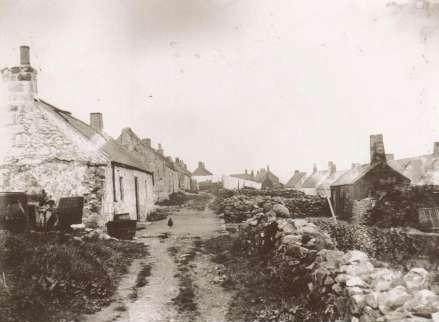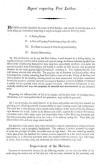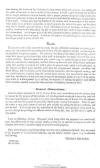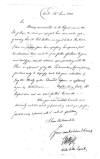
Thomas Telford and Portlethen |
Thomas Telford's report of Port Leithen (Portlethen) from 1810.
A Press advertisement re. Portlethen Harbour.
A letter from Telford's office turning down a request for Telford to revisit Portlethen in 1812.
While working on the Caledonian Canal, Telford was called upon by the government to make a survey of Scotland, inspecting the roads and bridges as well as the harbours used by the East and West coast fishing communities.
It was perhaps during this survey that Portlethen first came to Telford’s attention or it may have been that Sir William Johnston, the landowner of Portlethen at that time, had been aware of Telford’s work and commissioned an individual report, a plan and requested a quote from the civil engineer that would make Portlethen a more practical and attractive port.
Whatever the circumstances behind that initial correspondence it did result in Thomas Telford visiting Portlethen Village around 1810, and at that time he observed the current conditions of the village, roads and harbour. As a result of this visit Telford compiled a report (erroneously entitled “Report respecting Port Leithen”), a copy of which is attached here.
Additionally, Telford made plans of the village, haven and pier to accompany this report. What was his price to do this work which would have enhanced the village greatly? It came to a total of £695 and 16 shillings to complete the pier and a further £350 would have been required to build the road.
So what happened next? The answer is nothing. Sir William Johnston was having difficulties with his creditors, was facing bankruptcy and could scarcely afford the outlay of over £1000 that would have been required to bring the maritime side of his estate up to scratch. This was a shame because the estate would have reaped the benefits in the long term. Unfortunately money talks and Telford, although already quite famous, did not yet have the brilliant reputation that he gained in his later years and after his death. Therefore the people of Portlethen were probably not aware of how close they came to being associated with someone who was going to become one of the best and most forward thinking civil engineers in the world.
Sir William finally responded to Telford’s office in Edinburgh nearly two years after the initial report and quote was made. It appears that he was becoming desperate to sell the estate of Portlethen and he recognised that the chances of selling with a first class harbour and roads in place would enhance his chances of a sale. He sent a request to Telford to visit Portlethen once again, perhaps he was of the opinion that he might be able to cut corners on the work scope or knock Telford down on price. By this time Telford was busy on the Isle of Skye and was unable to spend any time in Portlethen, redrawing plans or making new quotes so his office responded in kind with a “take it or leave it” letter in relation to his original offer.
Nothing further happened and within four years the estate of Portlethen had been sold and Sir William was dead.
That should have been the end of the story however it appears that the Gammell family who had just purchased the estate of Portlethen were keen to rekindle interest in the development of the harbour as hinted at by the following Telford note held in the archives of the Institution of Civil Engineers, “His friend Gansmill has purchased the estate of Portlethen and is about to renew application for grant for small harbour”.
Whether a grant was applied for is not known as there is no further correspondence in relation to Thomas Telford and Portlethen from that date onwards. So we came very close to having a connection to a famous person in history but we didn’t manage to follow through with it which is a great shame. It would have been good to have had an architectural structure with a link to a historical figure within Portlethen.
As a footnote to this story, have a look at the shore at Portlethen and look at the rocks at the point of the eastern side of the shore and you will see that there has been some concrete pier work done in the past, additionally there is a “wall of boulders” on that same eastern side but nearer to the beach itself. When did this work occur, who was responsible for it, and what did everything look like when it was brand new? These are questions that I would love to have the answers for but there is very little mentioned about the local harbours in any of the estate matters.
It may well be that the last time anyone thought about upgrading the pier and harbour at Portlethen was when Messrs Johnston and Gammell approached Thomas Telford in the early 1800’s and since then there has been nothing except for the occasional addition of a ring or a bollard on or near the shore rocks.



